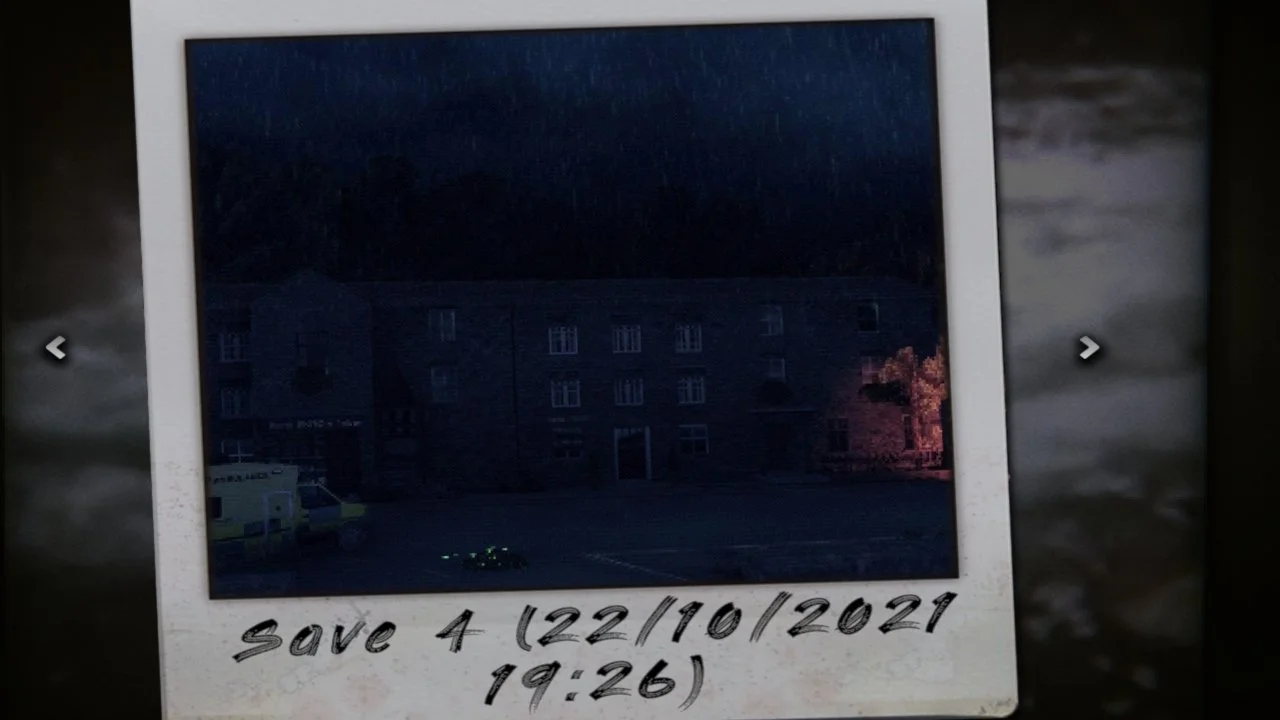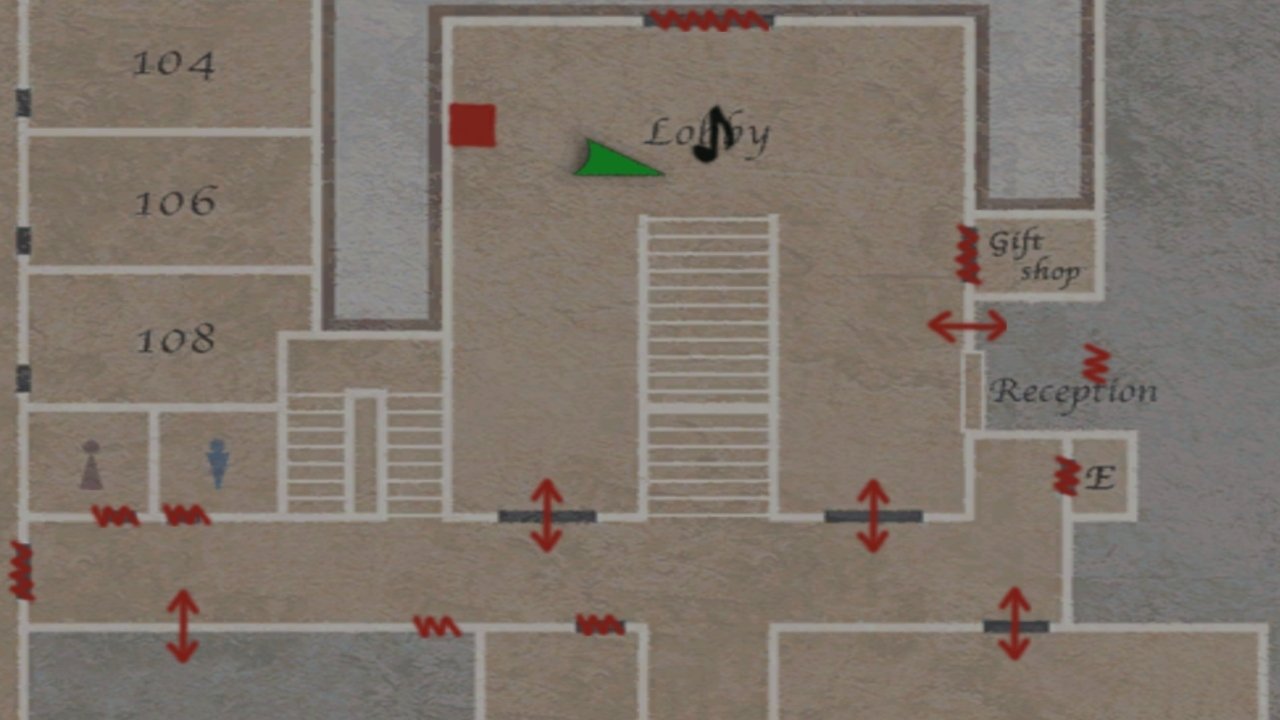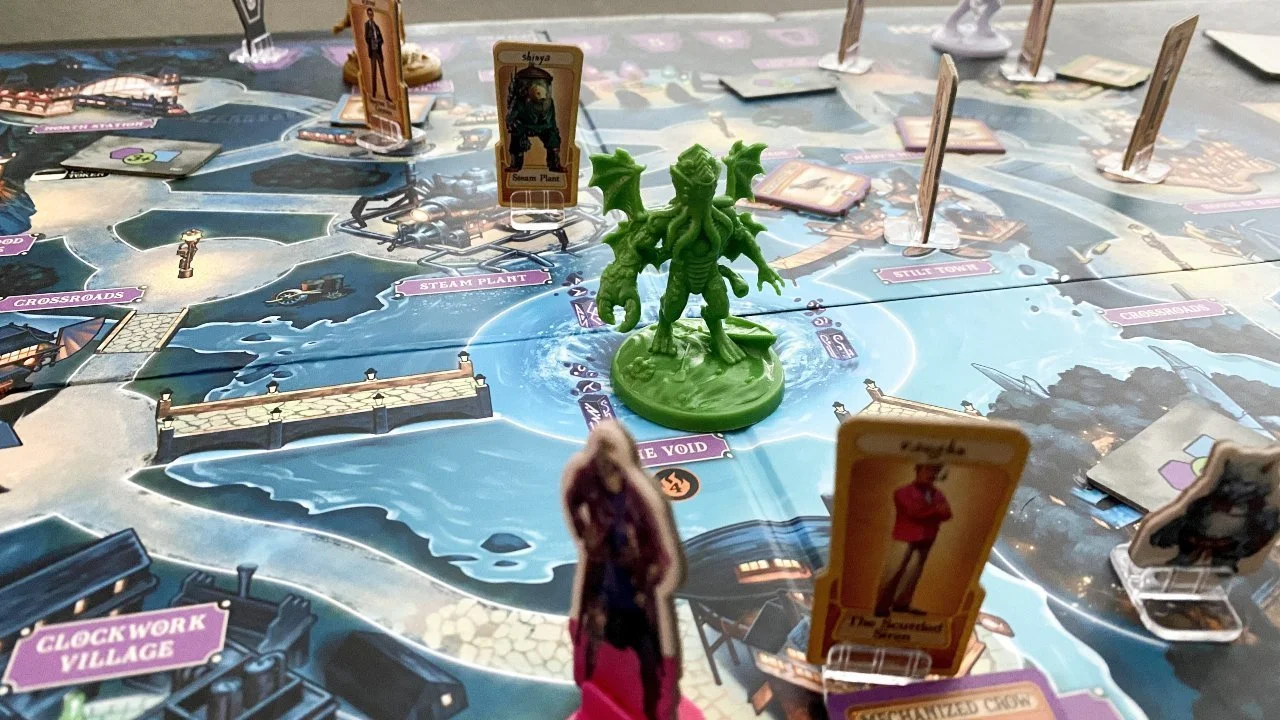Save Screen from Chasing Static
The devil is in the details, and it's those devilishly good games that get this right with oh-so-satisfying interfaces and interactions that imbue their respective game worlds with a real sense of tangibility and fortify their immersion.
From menus to objects to whole in-game spaces; when done right, interfaces can be both physically and mentally pleasing to the gamer. Some are so good that it’s a wonder that they haven’t become standards adopted by subsequent games of their ilk. Here are 10 such examples:
1. Evidence Board – Outer Wilds
Having an in-game journal to recount your adventures in plain old text is useful, but seeing this information sprawled out and webbed together makes all the difference in understanding what to do and where to go.
In Outer Wilds, your ship's log is where you can access this. It gives you the option to flip between map and evidence board modes: the former lets you see where all the clues you've gathered are in your solar system, and the latter reveals all their intricate interconnections, allowing you to piece together all the strange phenomena in your neck of the universe.
It also demonstrates the incredible minds of the developers at Mobius Digital, as it lays bare just how perfectly the whole construct is put together. It's been a stalwart feature of many a Police Procedural, and it's about time it was represented digitally in every game where you are tasked with unraveling some great mystery.
2. Annotated Map – Silent Hill Series
Navigating your way through a labyrinthine horror scape is hard work. Thankfully, it’s the one area where the Silent Hill series is somewhat merciful. Map screens are of course a gaming stable, but where Silent Hill departs is that it makes this a dynamic object, with red marker scrawls updating the status of doors you’ve checked, physical changes to the world, and vital puzzle clues you’ve discovered. How your player character manages to keep revising this thing in the face of such unbridled terror is quite a feat.
It also has a great paper-unfurling sound every time you open and close it, which is nice... One of the few noises in the game that doesn’t crawl up your spine.
3. Photo Saves – Chasing Static
PS1-style indie horror Chasing Static has a small but neat concept for its saving system: you have to take a picture with your polaroid camera, with the date and time of your save being handwritten on it. A simple touch but it really helps to keep you immersed in the game's world.
Although Chasing Static is a brief and fairly linear sojourn in rural Wales, the ability to take a picture of whatever you like on-screen could really prove useful in more complex game worlds, allowing you to essentially create a visual cue of where you are and what you’re doing, without breaking the verisimilitude.
4. Interactive Ledger – Disco Elysium
This tactile and deeply layered item brings some semblance of order to the otherwise chaotic mind and world of protagonist Detective Harrier “Harry” Du Bois. At the beginning of the game, he struggles to get his head above water until he finally starts getting his proverbial together, with the real turning point being the reorganization of his notebook. After all, as the documentary Hot Fuzz taught us, it is the Police Officer’s most important tool.
Taking a deep dive into this sizable tome not only crystallizes key aspects of your investigation but also elicits existential questions pertaining to Harry’s inner psyche - and of course, being this game, it talks back to you in typical circumlocutory fashion. The latter aside, such an in-depth tool would benefit any game where you have to play detective by really making you feel like one.
5. Vehicle Interior - Subnautica
After the struggles of relying on your lung capacity to explore the depths of the ocean, what a joy it is to be able to finally craft a Cyclops, the game’s leviathan-class submersible. You can walk around the interior space and interact with its host of gadgets and QoL facilities, which include storage lockers, exterior cameras, torpedo bays, and a console for customization options.
Having your very own home-from-home is a fantastic feeling, especially since hitherto you had to beat a hasty retreat from your expeditions looking for precious metals before you starved to death, or - even worse - had to leave items behind for lack of inventory space. So long as you’ve parked up nearby, you don’t have any more oxygen concerns either. It might not protect you from all the fauna loitering around though...
One can imagine this working equally well for land and air vehicles in other games. Having your very own mobile command center anywhere you like is very useful, not to mention empowering.
6. Computers – Vampire: The Masquerade - Bloodlines
For the size of its map, this cult classic built a compelling simulacrum of post-millennial west coast America in which to indulge your vampiric role-playing fantasies. Perhaps it’s the minutiae of the environments and interactions therein that are doing the heavy lifting in creating this sense of place. The most prominent example are the computers, with period-appropriate clunky laptops and desktops replete with CRT monitors.
They act as a hub for mission progression and provide updates on your standings within the various clans, as you scour through green-text emails and memos, none of which feels expositional or immersion-breaking, thanks to the brilliant writing from developers Troika (no surprise as the defunct team featured key staff who are now at Obsidian, the best writers in the biz). The realism is also bolstered by the spam emails you receive, offering certain *ahem* expansions of your powers… you can guess the kind.
7. Doors – Amnesia Series
Doors are terrifying - every Resident Evil fan knows that. But those interminable, glorified loading screens pale in comparison to the agony of having to slowly pull open the door yourself, a la the Amnesia series. There’s a hefty clunk as you turn the latch and a chink from the swing of the knocker. You can close them behind you too if you wish, although that may be ill-advised if you encounter something you want to double back from.
This is when they play a dastardly trick on you: as you flee in terror, you think that you can close them behind you to slow down your pursuer - but then you remember the time and effort that would take. So you have to make a choice: either keep your back exposed as you scramble away, or risk the most nail-biting attempt to close a door you surely will ever experience.
Having full control to open doors as slowly or as quickly as you like, coupled with making that control somewhat of an effort, really elevates the terror.
8. Smartphone – Grand Theft Auto 5
With so much to do in GTA 5, wouldn’t it be nice to have an app or two to help you facilitate all the carnage you'll inevitably be causing? Well, true to its commitment to simulating virtually every aspect of metropolitan life, that’s exactly what this game has. Pulling up your phone is easy and unintrusive, and opens up the world for you; from calling cabs and emergency services, to purchasing your very own war machine at the press of a button - or should that be the touch of a screen?
Perhaps we'll have to wait for an official VR version - which is practically inevitable given the number of editions this game has already had - to experience the full interactivity of a smartphone, but it's a start that other games set in modern or future worlds will surely implement upon in more depth. We can't live without them in real life, so how can we continue to live without them in the virtual realm?
9. Lockpicking – Splinter Cell: Chaos Theory
A perfect blend of simple yet subtly complex mechanics that gives you real control over the challenge of stealthy breaking-and-entering. It's all in the feedback you get - the rocking and vibrating when you’re too forceful, accompanied by the hi-fidelity clicks and clanks until you find the sweet spot and succeed in getting through.
It's hard to think of a better way of implementing such a lockpicking mechanic in a game, although Skyrim should get an honorable mention, even if it is a little less involved. But every game with a lockpicking mechanic should have the same level of feel as you get with Chaos Theory.
10. Examining Objects – Resident Evil Series
Even the rudimentary examining mechanic in the early Resident Evil games was satisfying, as you uncover hidden aspects of an inventory item via its manipulation in three-dimensional space. This has only become evermore elaborate as the series has progressed. They have become puzzles in themselves, requiring you to grab, pull, and twist certain mechanisms to solve. Being this hands-on with such objects gives them a veritable presence and makes them meaningful.
The magic comes down to giving you the freedom to control every aspect of the object, rather than holding your hand down a linear path and doing most of the work for you. Games with physical puzzles should all have this uber-tactile approach.
Silent Hill Map with Notations
That’s just 10 examples of different immersive interfaces I’ve experienced in a variety of games, but there are quite a number of interfaces that are worth being noted, upgraded, and implemented in more games in the modern world. What are some of your favorite interfaces that you wish to see more often in new games?






















